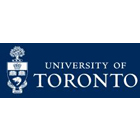- الأخبار والمقالات
- Find usIDP AustraliaIDP BahrainIDP BangladeshIDP CambodiaIDP CanadaIDP ChinaIDP EgyptIDP GhanaIDP Hong KongIDP IndiaIDP IndonesiaIDP IranIDP JordanIDP KenyaIDP KoreaIDP KuwaitIDP LebanonIDP MalaysiaIDP MauritiusIDP Middle EastIDP NepalIDP New ZealandIDP NigeriaIDP OmanIDP PakistanIDP PhilippinesIDP Saudi ArabiaIDP SingaporeIDP Sri LankaIDP TaiwanIDP ThailandIDP TurkeyIDP UAEIDP VietnamIDP Corporate
- Social
- العربية
- Where we operate
- Courses
- Scholarships
- IELTS
- About IDP
- خدمات الوصول
- الأخبار والمقالات
- Find us
- Find us
- Find nearest IDP offices
- IDP Australia
- IDP Bahrain
- IDP Bangladesh
- IDP Cambodia
- IDP Canada
- IDP China
- IDP Egypt
- IDP Ghana
- IDP Hong Kong
- IDP India
- IDP Indonesia
- IDP Iran
- IDP Jordan
- IDP Kenya
- IDP Korea
- IDP Kuwait
- IDP Lebanon
- IDP Malaysia
- IDP Mauritius
- IDP Middle East
- IDP Nepal
- IDP New Zealand
- IDP Nigeria
- IDP Oman
- IDP Pakistan
- IDP Philippines
- IDP Saudi Arabia
- IDP Singapore
- IDP Sri Lanka
- IDP Taiwan
- IDP Thailand
- IDP Turkey
- IDP UAE
- IDP Vietnam
- IDP Corporate
- Social
- تبديل اللغة
- آي دي بي للتعليم /
- الجامعات والكليات /
- Canada /
- University of Toronto /
- Doctor of Philosophy in Art...

Doctor of Philosophy in Art History - Modern/Contemporary Art
At UNIVERSITY OF TORONTO
المكان
Canada
المؤهل الدراسي
Ph.D.
الرسوم
CAD6210
(2025)
المدة
4 Year(s)
موعد بدء الدراسة القادم
08 September 2025
درجة القبول
7.0
امتحان الآيلتسCOURSE_INFO
Students in the graduate program may also benefit from the department's affiliations with the Centre for Medieval Studies, the Centre for Renaissance and Reformation Studies, the program in Book History and Print Culture, and the Mediterranean Archaeology Collaborative Specialization. Resources and affiliated faculty at the Royal Ontario Museum, the University Art Centre, the Gardiner Museum, and the Art Gallery of Ontario also provide access to Toronto's vibrant arts scene. The University hosts a number of specialist libraries for art historical research, including the Department of Art History's library with over 40,000 exhibition catalogues, the Cheng Yu Tung East Asian Library, and Robarts Research Library, a resource unrivalled in Canada and among the leading university libraries in North America. The PhD program is designed to prepare students for college and university teaching, museum work, and other research positions.
Graduate study in the fields of modern and contemporary art and visual culture is especially strong at the University of Toronto with over ten full-time faculty members dedicated to these areas. From the 18th century to the present and with an encompassing range of historical and theoretical emphases, our faculty are at the forefront of research and teaching across the full gamut of media. As befits its home in one of the world's most cosmopolitan cities, the Department offers unparalleled opportunities for the advanced study of modern and contemporary art and visual culture of North America, Europe, Asia, and Africa. This extraordinary diversity yields unusual strength in several coherent areas of inquiry, affording students the opportunity to fashion highly original research trajectories both within and across traditional geographical and chronological boundaries.
- المنح الدراسية
- التدريب
متطلبات القبول في University of Toronto
The five-year PhD program is designed for students who have graduated with a MA in art history or a related humanities major.
Scanned and Uploaded Transcript(s)
Letters of Reference - Do not include more than three reference letters. Additional letters will not be considered by the Admissions Committee.
Writing Sample
Letter of Intent
CV
IELTS - Minimum required score 7.0 (Academic) with at least 6.5 for each component.
TOEFL IBT - Overall Score - 93, Writing and Speaking- 22, TOEFL Paper-based Test - Overall Score 580, TWE: 5
آخر موعد للتقديم
الموعد النهائي لتقديم الطلبات غير متاح تحدث إلى أحد مستشاري آي دي بي لمزيد من المعلومات التفصيلية
Further information
If you aren't eligible for the above entry requirements, you might ant to explore pathway options at University of Toronto. If you want to find out more, speak to our counsellors.
تصنيف التايمز للجامعات العالمية (THE)
21st / 1250
تصنيف التايمز للجامعات العالمية (THE)آراء طلابنا
لم نتلق أي تقييمات لهذه المؤسسة حتى الآن.
مختارة لك
- الدكتوراه
- Canada
- نوع التمويل: Fee waiver/discount
- الدكتوراه
- Canada
- نوع التمويل: Fee waiver/discount
- الدكتوراه
- Canada
- نوع التمويل: Fee waiver/discount
- الدكتوراه
- Canada
- نوع التمويل: Fee waiver/discount
Your action plan
خطوة 1
Shortlist your courses
Choose the best three courses you’re most likely to pursue.
خطوة 2
Check your eligibility
Get an instant in-principle offer for courses with the IDP FastLane tag.
خطوة 3
Apply through IDP Live
Fill out the form once and use it to apply to multiple courses.
كيف تعمل خاصية FastLane بواسطة آي دي بي؟
مع "العرض المبدأي" من FastLane، ستعرف في دقائق إذا ما تم قبولك!
اختر المؤسسة والبرنامج الدراسي
أنشئ ملفك الأكاديمي
قدم طلبك للحصول على "عرض مبدأي"
ستصلك القرارات من المؤسسة (المؤسسات) التي اخترتها في دقائق!
استعد لتقديم طلبك مع مستشار تعليمي متخصص




